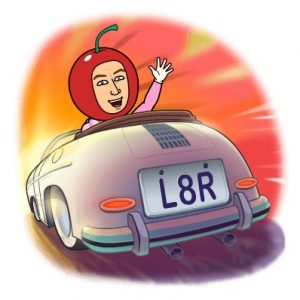The Drawing Requirement for a U.S. Trademark Application
by Michael Goltry, Registered Patent Attorney (480-991-3537; mg@pgpct.com)

A U.S. trademark application must include a drawing of the mark sought to be registered. The drawing must be clear, and must be filed with the original application to receive a filing date. The purpose of the drawing is to provide notice of the mark sought to be registered. The drawing is used to reproduce the mark in the Trademark Official Gazette and on the registration certificate. Applications for registration of sound, scent, and other non-visual marks do not require a drawing.
There are two forms of drawings: “standard character drawings” and “special form drawings.” Applicants who seek to register a “word mark,” words, letters, numbers, or any combination thereof, without limitation to any particular font, style, size, or color, and that does not include a design element, must submit a standard character drawing that shows the mark in black on a white background. Applicants who seek to register a mark that includes a two or three-dimensional design, color, and/or words, letters, or numbers or the combination thereof in a particular font, style or size must submit a special form drawing that should show the mark in black on a white background, unless the mark includes color. A special form drawing” presents a mark comprised, in whole or in part, of special characteristics such as elements of design or color, style(s) of lettering, or unusual form(s) of punctuation.
An application must be limited to only one mark. An application that includes two or more drawings displaying materially different marks does not meet this requirement. If an applicant submits two or more drawing pages, the application is denied a filing date, because the applicant has not met the requirement for a clear drawing of the mark. The USPTO will not deny a filing date if the drawing shows spatially separate elements. If an applicant submits an application where the “drawing” is composed of multiple elements on a separate page, multiple elements on a single digitized image, or multiple elements in a separate area of the body of the application, the applicant has met the requirement of a single mark. However, the trademark examining attorney must determine whether the matter presented for registration is a single mark projecting a unitary commercial impression. If the examining attorney determines that spatially separate elements constitute two or more different marks, the examining attorney normally must refuse registration. An applicant may amend the drawing to depict a single mark if the amendment does not materially alter the mark, or may submit arguments that the matter on the drawing does in fact constitute a single mark.
An application for a three-dimensional mark requires a special form drawing depicting a single rendition of the mark. If the applicant submits a drawing that depicts a three-dimensional mark in multiple renditions, the examining attorney will normally require a substitute drawing depicting the mark in a single rendition. However, if the applicant believes that its mark cannot be adequately depicted in a single rendition, the applicant may file a petition requesting that the rule be waived.
Applicant’s often spend considerable effort and resources developing marks that include word elements and design elements, namely, “composite marks” which includes both a word or a slogan and a design or logo. This is distinct from a word mark, which does not include a logo or design. Accordingly, choosing how to register a mark, whether in standard form or special form, must be carefully considered to secure the right trademark protection. For this reason, applicants should seek the assistance of a qualified trademark attorney to ensure the mark sought to be registered is the correct mark and is correctly presented in the drawing of the application.

Client Approved
“”
“”
“”
“”

10643 North Frank Lloyd
Wright Blvd. Suite 201
Scottsdale, AZ 85259
Phone: (480) 991-3435
Open 9-5pm Monday - Friday
Arizona’s premiere patent attorneys serving clients throughout the U.S. and internationally for almost 30 years.
Located in Scottsdale, Arizona, we serve clients locally as well as throughout the United States and across the world.

